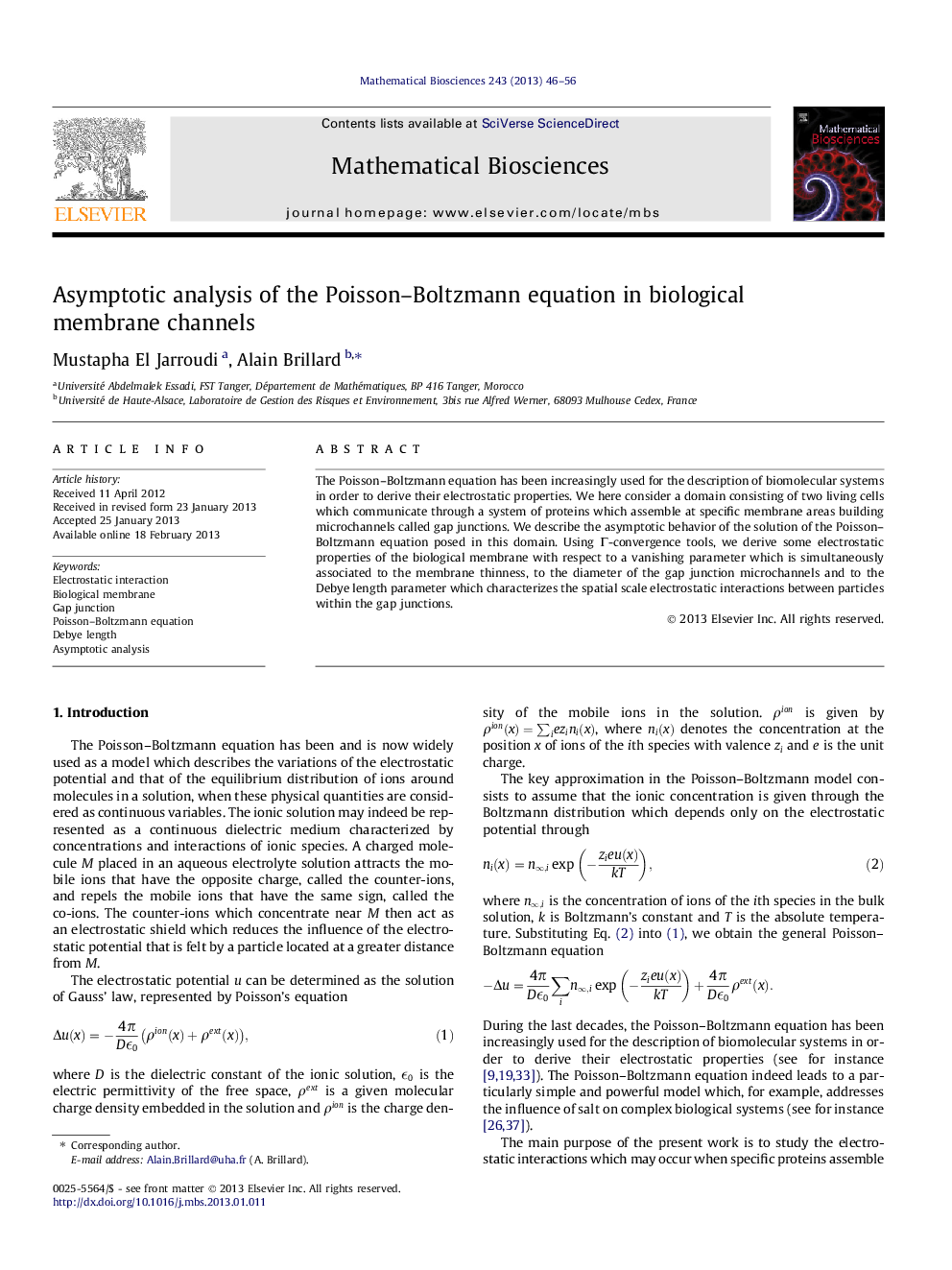| Article ID | Journal | Published Year | Pages | File Type |
|---|---|---|---|---|
| 4500171 | Mathematical Biosciences | 2013 | 11 Pages |
The Poisson–Boltzmann equation has been increasingly used for the description of biomolecular systems in order to derive their electrostatic properties. We here consider a domain consisting of two living cells which communicate through a system of proteins which assemble at specific membrane areas building microchannels called gap junctions. We describe the asymptotic behavior of the solution of the Poisson–Boltzmann equation posed in this domain. Using ΓΓ-convergence tools, we derive some electrostatic properties of the biological membrane with respect to a vanishing parameter which is simultaneously associated to the membrane thinness, to the diameter of the gap junction microchannels and to the Debye length parameter which characterizes the spatial scale electrostatic interactions between particles within the gap junctions.
► We describe the electrostatic interactions in the gap junction channels which couple two living cells. ► Our model is based on the Poisson–Boltzmann equation with varying Debye lengths. ► Mathematical asymptotic models for ion currents across a biological membrane are derived, using Gamma-convergence methods. ► Three different electrostatic behaviors are obtained according to the Debye length compared to the membrane thinness.
